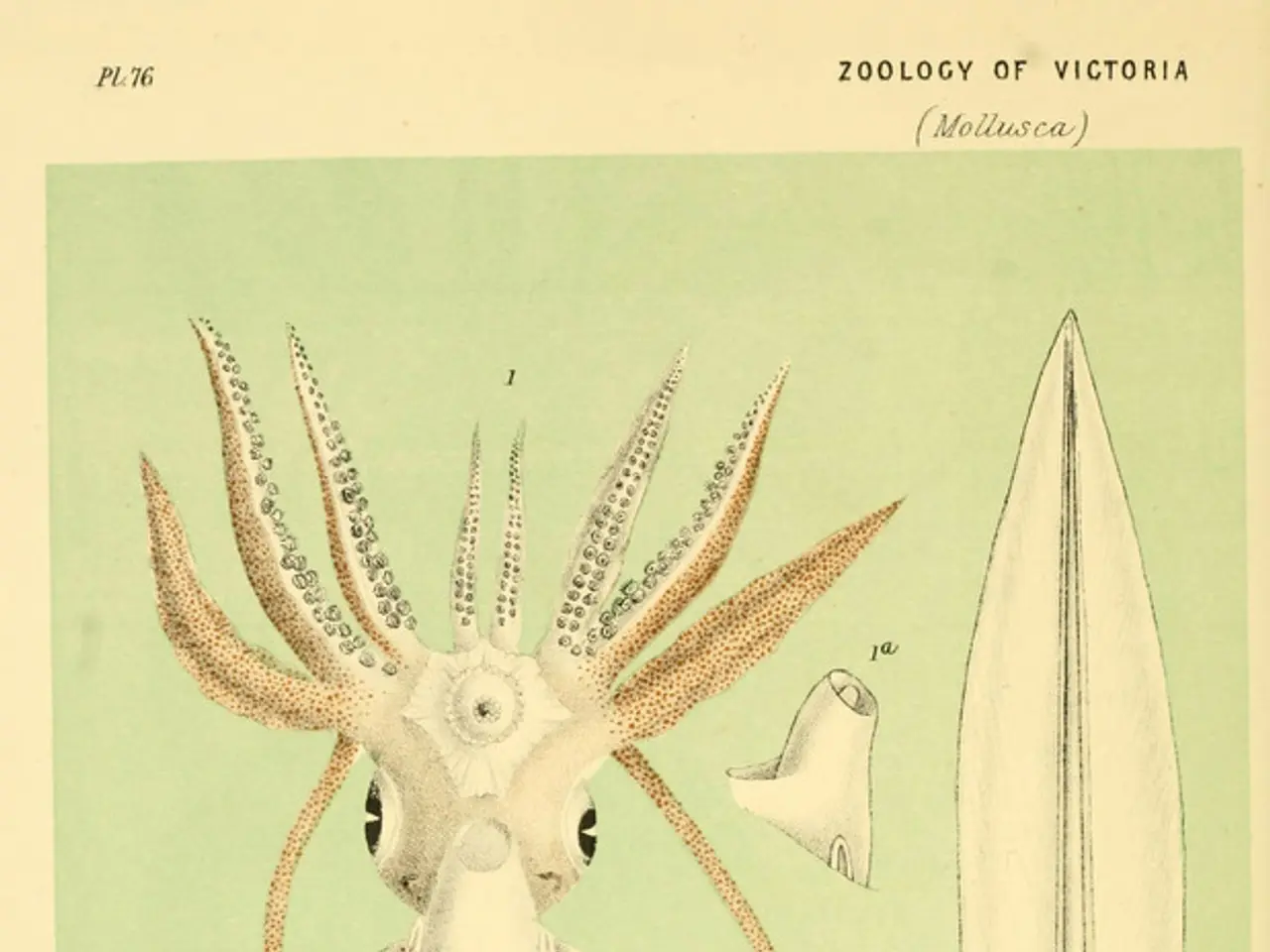Gargantuan Squids in a Showdown: Staggering Differences Unveiled
In the vast and mysterious depths of our oceans, the colossal squid and its smaller cousin, the giant squid, remain elusive and seldom encountered in their entirety. These enigmatic creatures are the subject of fascination and ongoing research.
One of the largest colossal squid specimens ever recovered is preserved at the Museum of New Zealand Te Papa Tongarewa (Te Papa). This remarkable specimen offers a rare glimpse into the world of these deep-sea dwellers.
The colossal squid, a species known as Mesonychoteuthis, inhabits the cold, dark regions of the deep ocean, typically between 500 and 1000 meters below the surface. This suggests that they are more likely to be found in the deep, cold southern ocean waters around Antarctica rather than in shallow or tropical regions.
Giant squid and colossal squid are the primary food sources for sperm whales, smaller whales, and other large predators. Evidence of this can be seen in the indigestible beaks of these squid found in the stomachs of these marine creatures.
The colossal squid is equipped with unique adaptations to survive in its environment. It possesses light organs, which may help camouflage it from its large predators. Additionally, it has two rows of tiny suckers and rotating hooks made of material similar to human fingernails.
While the colossal squid is the focus of much attention, it is just one of many species of squid inhabiting our oceans. Studying the conservation status, total length, natural history, and adaptations of various squid species provides valuable insights into the diversity of cephalopods and their role in ocean ecosystems.
Recent advancements in technology, such as the deep-sea expeditions by the Schmidt Ocean Institute, have provided rare footage of these elusive creatures in their natural habitat. These discoveries continue to fuel our curiosity and deepen our understanding of these fascinating deep-sea dwellers.
This article was created in conjunction with AI technology, fact-checked, and edited by a website editor to ensure its accuracy and readability. The ongoing study and exploration of these giant creatures of the deep remain a captivating journey, shedding light on the mysteries of our oceans.








